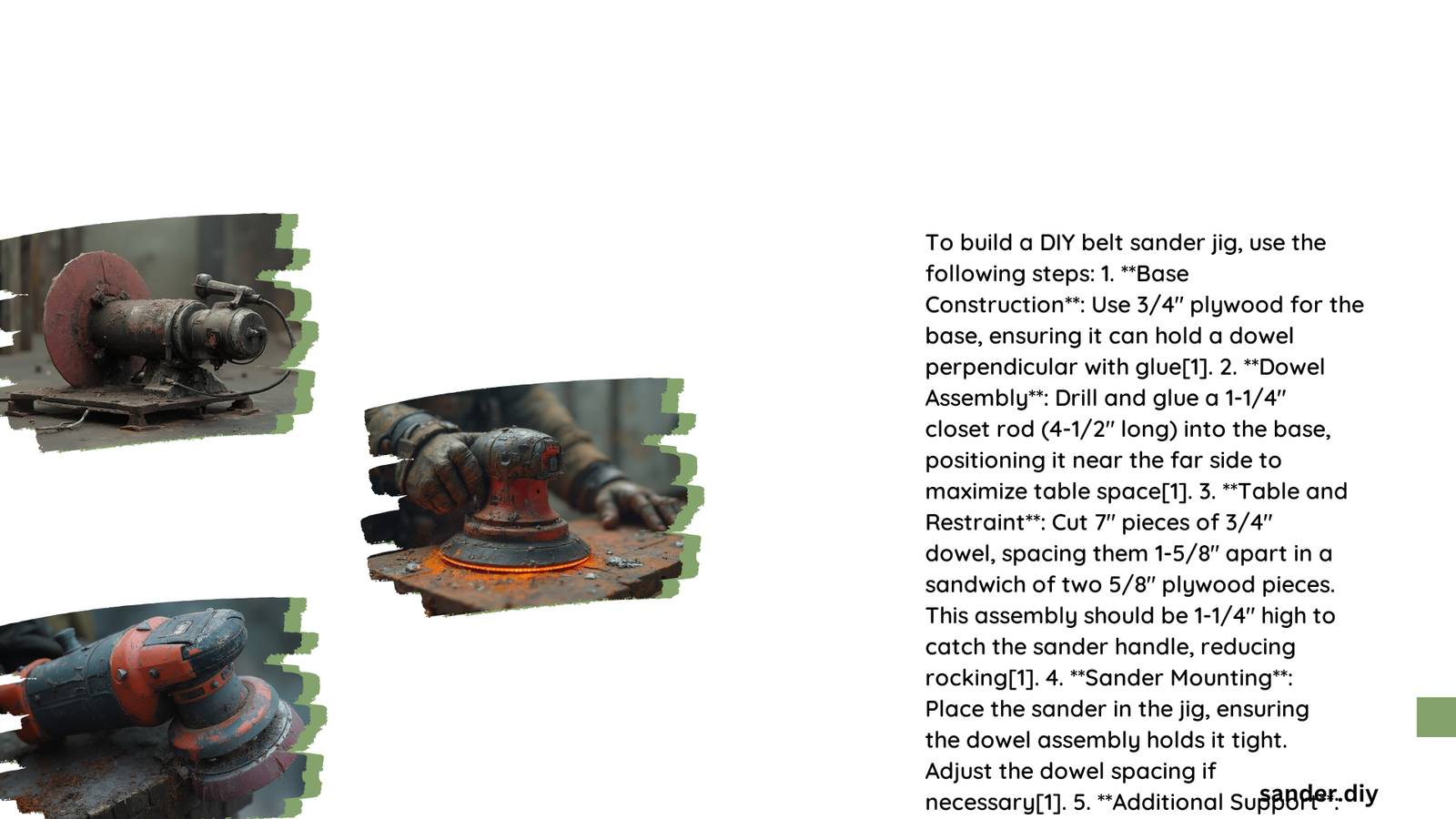A DIY belt sander jig is an essential workshop accessory that transforms your handheld belt sander into a precise, stable workstation. By creating a custom mounting platform, woodworkers can achieve consistent sanding angles, improve edge work, and enhance overall project accuracy. This comprehensive guide will walk you through designing, constructing, and optimizing a professional-grade belt sander jig using readily available materials and basic woodworking skills.
Why Create a DIY Belt Sander Jig?
What Problems Does a Belt Sander Jig Solve?
Woodworkers often struggle with maintaining consistent sanding angles and controlling handheld belt sanders. A custom jig addresses these challenges by:
- Providing stable mounting for precise sanding
- Enabling repeatable edge and surface treatments
- Reducing hand fatigue during extended projects
- Increasing overall woodworking accuracy
Essential Materials for Your DIY Belt Sander Jig

| Material | Recommended Specifications | Estimated Cost |
|---|---|---|
| Plywood | 3/4″ or 5/8″ thickness | $15-$25 |
| Lumber | 1″ x 2″ support blocks | $10-$15 |
| Dowels | 1-1/4″ closet rod | $5-$8 |
| Hardware | Threaded rods, T-nuts, screws | $10-$15 |
Step-by-Step Construction Process
How Do You Prepare the Base?
- Measure your specific belt sander dimensions
- Cut plywood base 6-8 inches longer than sander
- Trace sander body onto base
- Create precise support blocks
What Techniques Ensure Proper Alignment?
- Use L-square for perpendicular measurements
- Dry-fit components before permanent attachment
- Verify sander sits flush and stable
- Test multiple angles for versatility
Advanced Jig Customization
Can You Add Adjustable Features?
Incorporate hinges and additional support blocks to create:
– Tilting mechanisms
– Angle-adjustable platforms
– Modular design for different sander models
Pro Tips for Successful Jig Construction
- Choose lightweight materials
- Prioritize precision over speed
- Test fit repeatedly during construction
- Sand and finish wooden components
Cost and Time Investment
- Total Material Cost: $40-$65
- Estimated Build Time: 4-6 hours
- Skill Level: Intermediate woodworking
Safety Considerations
- Wear protective eyewear
- Use sharp cutting tools carefully
- Ensure stable work surface
- Follow manufacturer’s sander guidelines
Maintenance and Care
- Periodically check alignment
- Apply wood sealant to prevent moisture damage
- Store in dry, temperature-controlled environment
- Inspect mounting points for wear
Potential Modifications
- Add dust collection ports
- Create interchangeable table surfaces
- Design model-specific mounting brackets
Troubleshooting Common Issues
- Wobbling: Reinforce support blocks
- Misalignment: Re-check measurements
- Instability: Add additional mounting points
Final Recommendations
A well-constructed DIY belt sander jig transforms your handheld tool into a precision instrument. Invest time in careful design and meticulous construction for optimal results.
